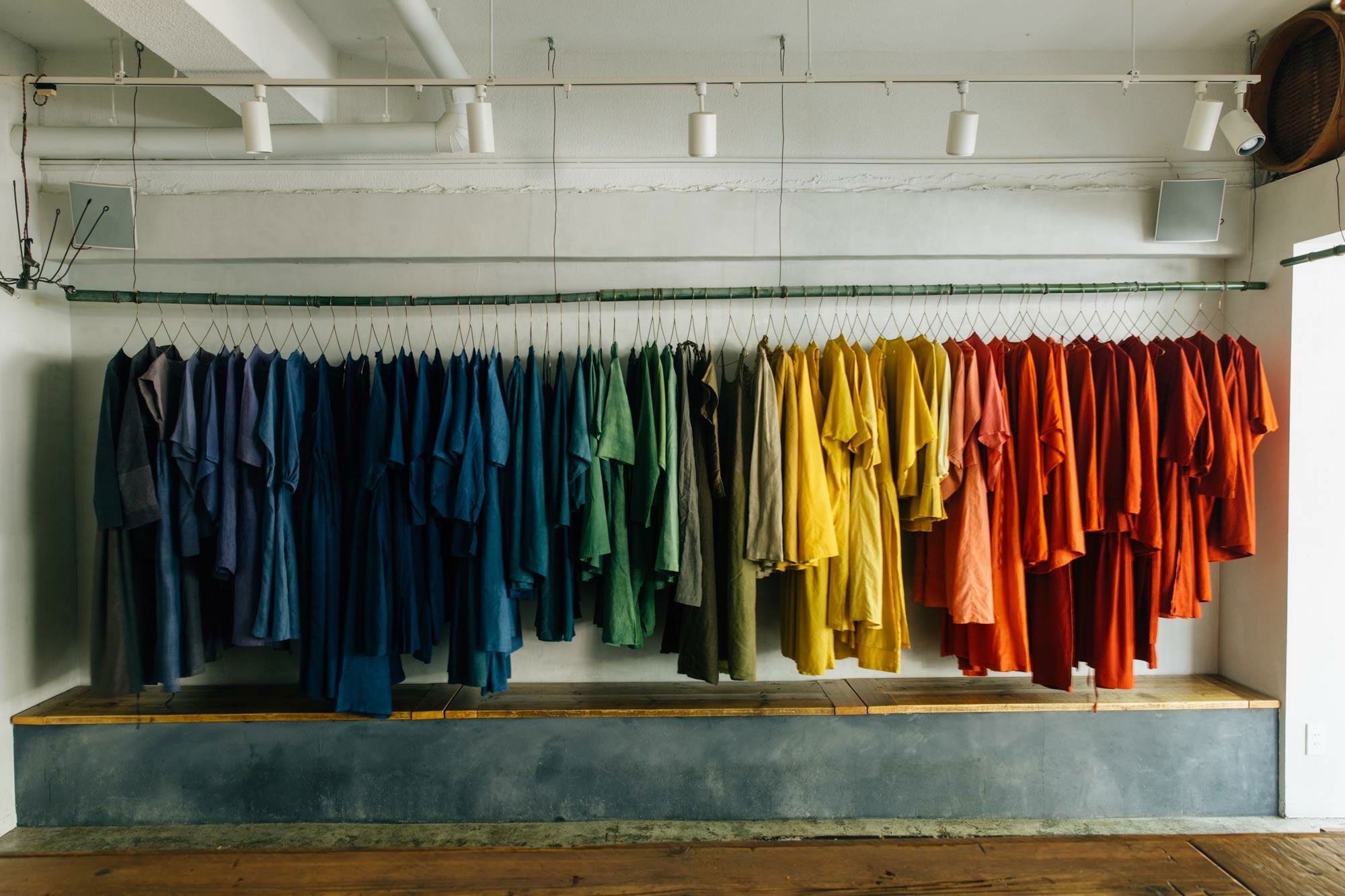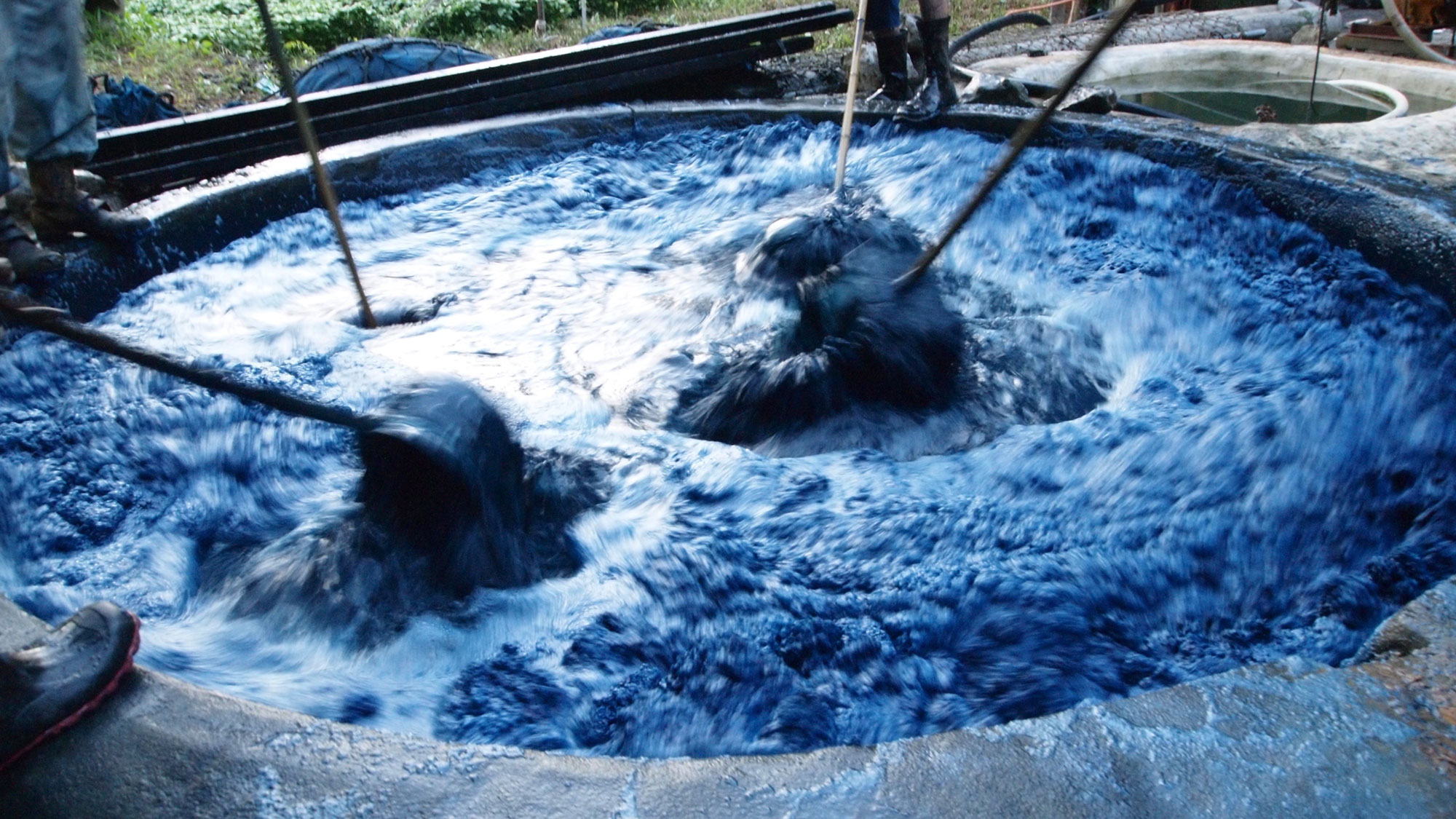About

photo by Kei Maeda
kittaについて
–
kittaの活動は1998年にkittaのディレクター、橘田優子が植物染色を用いて衣服を作り始めたことから始まります。東京、兵庫、千葉を経て沖縄にアトリエを構えたのが2011年。現在はスタッフ数名と共に、物が生まれてから土に還るまでを分断のない一つの流れとして捉え、「自然と人間を媒介する」というコンセプトを軸に衣服やアートピース、インスタレーションの制作を行っています。
自分たちで栽培、製造した琉球藍や沖縄の植物を中心に様々な植物の枝葉、樹皮、根などを用いて染色を行っています。薪の火や発酵の技術を用いて染めることも大切なプロセスの一つです。又、販売した衣服を長く着て頂くために染め直しの提案も行っています。
About kitta
–
The story of kitta begins in 1998, when the director, Yuko Kitta, started making clothing using natural dyeing techniques. In 2011, she established an atelier in Okinawa, after working in Tokyo, Hyogo Prefecture, and Chiba.At present, she (together with other kitta employees) is engaged in the production of art pieces, installations and clothing with the idea of shepherding objects from their birth to their return to the earth as a central motivating concept.
The dyes used by kitta are hand-produced using mainly the Ryukyu indigo we grow ourselves and the leaves, branches, bark and roots of various Okinawan plants.
Heating via flame and fermentation are also important techniques in our dyeing process. In addition, so that the clothes kitta produces can be worn for long periods, we also redye kitta products when colors fade.

aabiについて
–
aabiはkittaの作品制作に欠かせない琉球藍を初めとする染料の自給プロジェクトです。沖縄の伝統的な様式に則り琉球藍を栽培し染料を製造しています。また、植物から抽出した染料を応用し顔料や絵具を作るなど、植物の可能性を様々な形で生かすための研究も行っています。
About kitta
–
aabi is a project for self-supporting dye production taking Ryukyu indigo as a starting point, and is a key part of kitta's production process. Following traditional Okinawan methods, we are engaged in the cultivation of Ryukyu indigo. Further, we have an ongoing process of research on the exploration of the possibilities of plants in a variety of forms, such as the extraction of pigments and colors for use in painting from plant materials.
琉球藍の製造は毎年沖縄の慰霊の日(6月23日)を目安に半月ほど行っています。藍とは固有の植物名ではなく植物に含まれる成分のことを指し、琉球藍はキツネノマゴ科、日本本土で多く栽培されているタデ科の蓼藍、アジアに広く分布するマメ科のインド藍、アブラナ科のウォードなど様々な藍の種類があります。この映像では沖縄で古くから栽培されている琉球藍から作る染料、泥藍について紹介しています。毎年梅雨の明ける頃に琉球藍を400kg程刈り取り、水を貯めておいた直径3mほどのすり鉢状の槽に漬け込んでいきます。重しを乗せて、50〜55時間待つと水に藍の色素が溶け出し水面には青い膜が張ります。葉っぱの残滓を取り除いた後、適量の石灰を入れ数人で空気を送り込むように1時間弱撹拌し続けると徐々に色素は固体となり槽の底に沈殿します。この沈殿したものを泥藍と呼びます。出来上がった泥藍を染色用の瓶に入れて発酵させて染色します。kittaの作品の中で、青系、緑系、紫系の色にはこの琉球藍をベースとして使用しています。
映像制作:小川櫻時(SAKKAKU)
The process of preparing Ryukyu indigo usually begins on June 23, the Okinawan day for remembrance of the dead, and proceeds for about half a month. The word “indigo” does not refer to a single plant, but rather to a compound found within various plants, including the Okinawan indigo (Acanthaceae), dyer’s knotweed frequently cultivated in mainland Japan (Polygonaceae), the Indian indigo found widely across Asia (Fabaceae), and woad (Brassicaceae). These images introduce a dye which has been produced in Okinawa since ancient times: doroai. Each year, around the end of the rainy season, we harvest around 400kg of Ryukyu indigo and steep it in a 3m diameter basin filled with water. The basin is covered and stone weights placed on top, and after 50-55 hours of waiting a blue film forms on the water’s surface: this is the indigo pigment. After removing the residue of the leaves and adding the proper amount of quicklime, several people aerate the liquid by stirring it; after a bit less than an hour, the indigo pigment solidifies and settles to the bottom of the basin. This precipitate is called doroai. The doroai is put into bottles, fermented, and used for dyeing. At kitta, we use it as the base for producing green, blue, and purple colors.

